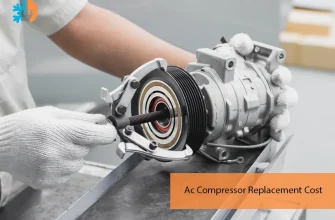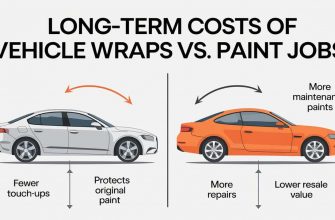When it comes to vehicles, much of the focus tends to be on flashy features, powerful engines, and advanced technology. Yet, the unsung hero of any automobile is its chassis. Much like the skeleton of a human body, the chassis provides the structural integrity that supports all other components of the vehicle. In this article, we will delve into the world of chassis, exploring its types, functions, and significance in vehicle performance and safety.
- What is a Chassis?
- Types of Chassis Design
- The Functions of a Chassis
- Importance of Chassis in Vehicle Safety
- Chassis Innovations: Shaping the Future of Automotive Design
- Electric Vehicles and Chassis Design
- Autonomous Driving: A New Era for Chassis Engineering
- Sustainability and Eco-Friendly Materials
- The Future of Chassis: Enhanced Performance and Safety
What is a Chassis?
The chassis is the base frame of a vehicle, upon which various components such as the engine, transmission, suspension, wheels, and body are mounted. It plays a crucial role in determining the vehicle’s strength, stability, and overall performance. The chassis is engineered to withstand significant stresses and strains while ensuring that the vehicle remains balanced and safe during operation.
Types of Chassis Design
Chassis designs have evolved over the years, with manufacturers implementing different approaches to cater to varying vehicle types and performance requirements. Here are the most common types:
- Body-on-Frame: This traditional design features a separate body mounted on a sturdy frame. Commonly found in trucks and SUVs, it allows for easy repair and modification.
- Unibody: In this modern design, the body and frame are integrated into a single unit. This approach is prevalent in most passenger cars, providing better fuel efficiency and weight reduction.
- Space Frame: A lightweight chassis design that uses a network of tubes to create a rigid structure. Space frames are often found in high-performance sports cars due to their strength and reduced weight.
- Platform Chassis: A flexible design that allows manufacturers to produce multiple models on the same base structure. This approach is cost-effective and efficient for mass production.
The Functions of a Chassis
The chassis serves several essential functions that contribute to the overall performance and safety of a vehicle:
- Structural Support: It provides the necessary support for the vehicle’s body and all attached components, ensuring that they remain securely in place during operation.
- Weight Distribution: An effective chassis design ensures that weight is distributed evenly across the vehicle, enhancing handling and stability.
- Impact Absorption: The chassis is designed to absorb and dissipate energy during collisions, protecting occupants and minimizing damage.
- Ride Quality: The chassis design influences the vehicle’s suspension system, which impacts ride comfort and handling characteristics.
Importance of Chassis in Vehicle Safety
In the realm of automotive safety, the chassis plays a pivotal role. A well-engineered chassis enhances crashworthiness, ensuring that the vehicle can withstand impacts without compromising the safety of its occupants. The materials used in chassis construction, such as high-strength steel or aluminum, contribute to both strength and weight savings. Additionally, modern chassis designs often incorporate crumple zones—areas engineered to deform and absorb energy in the event of a collision, further protecting passengers inside the vehicle.
Understanding the chassis is crucial for anyone interested in automotive engineering or simply looking to appreciate the intricacies of vehicle design. As the backbone of vehicle structure, the chassis not only supports various components but also significantly impacts safety, performance, and ride quality. As technology advances, we can expect to see even more innovative chassis designs that prioritize safety, efficiency, and sustainability, ensuring that the vehicles of the future are better equipped to meet the demands of a rapidly changing world.
So, the next time you admire a car’s sleek exterior or marvel at its cutting-edge technology, remember that beneath it all lies the chassis—the unsung hero that makes it all possible.
Chassis Innovations: Shaping the Future of Automotive Design
As technology continues to advance at a breathtaking pace, the automotive industry is undergoing a transformation that redefines the role of the chassis. The traditional concepts of vehicle design are being challenged by innovations such as electric vehicles (EVs), autonomous driving technologies, and the increasing emphasis on sustainability. These advancements not only influence the engineering of the chassis but also affect how manufacturers approach safety, performance, and environmental impact.
Electric Vehicles and Chassis Design
With the rise of electric vehicles, manufacturers are rethinking chassis design to accommodate new powertrains and battery placements. Unlike traditional internal combustion engines, electric motors offer greater flexibility in design. For instance, the battery packs can be integrated into the chassis floor, lowering the center of gravity and enhancing stability. This shift not only improves handling but also allows for more spacious interiors, as the absence of a bulky engine compartment frees up valuable cabin space.
Autonomous Driving: A New Era for Chassis Engineering
The push towards autonomous vehicles presents unique challenges and opportunities for chassis design. A chassis equipped for autonomy must accommodate advanced sensors, cameras, and communication systems. Engineers are also focusing on creating a more adaptable chassis that can handle varying driving conditions and scenarios without compromising safety. This might involve using lightweight materials and modular designs that allow for easy upgrades as technology evolves.
Sustainability and Eco-Friendly Materials
As the automotive industry grapples with environmental concerns, there is a growing emphasis on sustainable materials in chassis construction. Manufacturers are exploring alternatives like recycled metals and biocomposite materials that reduce the carbon footprint of vehicle production. Not only do these materials offer the potential for lighter chassis, improving fuel efficiency, but they also align with the increasing consumer demand for eco-friendly vehicles.
The Future of Chassis: Enhanced Performance and Safety
Looking ahead, the future of chassis design will likely be characterized by the integration of smart technology. Imagine a chassis that can monitor its own structural integrity, alerting drivers to potential issues before they become critical. This level of self-awareness could revolutionize vehicle maintenance and safety, enhancing the overall driving experience.
Moreover, as safety regulations become more stringent, chassis engineers will need to innovate continuously to meet these standards. The inclusion of advanced materials, improved crumple zones, and enhanced stability control systems will be vital in ensuring that vehicles remain safe while also providing the performance consumers expect.









This article brilliantly highlights the importance of the chassis in vehicle design. I never realized how crucial it is for performance and safety!
A well-written piece that emphasizes the structural role of the chassis. I appreciate how it connects to overall vehicle safety and performance!
The comparison of chassis types was well done. It gave me a clearer understanding of why different designs are used in various vehicles. Great job!
I loved learning about space frames and their application in sports cars. This article really opened my eyes to automotive engineering!
What a fantastic read! It
I found the explanation of different chassis types very insightful. The details about body-on-frame and unibody designs were particularly interesting!